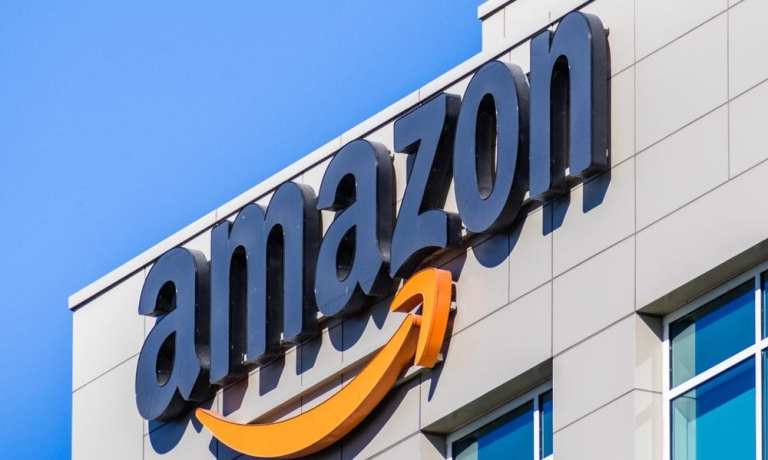
The Amazon Marketplace stands as one of the most successful efforts of the eCommerce operator, and now changes are looming to the fees that third-party sellers pay to be part of that online platform. Details remain vague but they come as Amazon continues to attract smaller businesses to its marketplace — and as many of those sellers express willingness to check out other marketplace choices.
Earlier this week, during Amazon’s post-earnings conference call, CFO Brian Olsavsky said the company might consider changing the fee structure it charges sellers as the breakdown of its sales continues to change. During the holiday quarter, Amazon reports that over 50 percent of sales on the platform came from small and medium-size businesses.
“More than half of our units sold are from third-party sellers, so it’s very important to us that we have the right business profile both for Amazon and for the sellers,” he said. “Part of that involves changing fee structures, sometimes adding new fees or subtracting old ones, part of it involves raising or lowering fees that sellers pay. So you’re going to see this continually from us,” he said, without offering further specifics.
Marketplace Growth
The recently completed fourth quarter provided further evidence of how important marketplace sales and related services are to Amazon, underscoring the significance of even those vague statements about pricing changes. Revenue from third-party seller services — such as commissions on sales and fulfillment and shipping fees — jumped 27 percent year over year in the fourth quarter, reaching nearly $13.4 billion, or about 19 percent of Amazon’s total Q4 sales of $72.4 billion.
Amazon’s fees for marketplace sales — where third-party sellers compete against each other and Amazon to win over customers — are complicated and vary by product category and the services use. Broadly speaking, Amazon offers two marketplace selling plans.
The Professional selling plan, meant for merchants who sell more than 40 items per month, costs $39.99 per month, plus “per-item selling fees that vary by category.” For instance, Amazon charges a 15 percent referral fee — or a minimum of $0.30 cents per item — for home and garden products. (Home products are among most common types of items sold on the Amazon Marketplaces, according to data from vendors who help outside merchants set up shop there.)
For merchants who sell less than 40 items a month, Amazon offers an Individual plan that has no flat monthly subscription fee but which costs $0.99 per item sold plus other selling fees, which vary by category. Amazon also offers its Fulfillment by Amazon service, a feature designed to make it appealing for third-party sellers to stick with the Marketplace by handing picking, packing, shipping and customer service for them. Those fees vary according to package size and storage time.
Walmart Moves
Amazon really has no close competitors in the marketplace space — no one with the scale and massive assortment of products — but Walmart likely comes closest. It has in recent years been trying to flex its marketplace muscles, so it’s fair to make a fee comparison with that retail chain. Walmart offers no marketplace fulfillment services — no effort at all-in seller service as Amazon does — nor does it charge flat monthly fees. Instead, it relies on referral fees to make money from its marketplace service, and according to the chain’s fee schedule, they range from 6 percent to 20 percent, depending on product category.
Without more details about how Amazon intends to change marketplace pricing, it’s difficult to state with any sort of clarity how those changes might impact the appeal of that platform, and how they might change the loyalties of current Amazon sellers. Forums and blogs devoted to Amazon marketplace sellers were quiet as of late Friday (Feb. 1) morning, suggesting that the comments from Olsavsky had yet to filter out to the wider world.
Seller Concerns
Costs and fees, of course, are an ongoing concern of marketplace sellers, and those forums and blogs had multiple complaints and questions about what Amazon charges. But you can be sure that those recent comments from Amazon will get wider play and consideration before too long. Proof from that comes from research done by those companies that help third-party sellers win marketplace sales.
For instance, a Feedvisor survey report of those sellers — a report that includes sellers of all sizes — found that “marketplace fees” stood as the second most common concern among those merchants, with 33 percent citing it.
In first place was worry over Amazon competing with sellers on the company’s marketplace — another concern that has existed since the launch of that platform — with 38 percent naming that issue. Rounding out the top five were negative reviews from consumers, high storage feeds (via Fulfillment by Amazon) and “Amazon taking away my seller privileges.” Further down that list were seller complaints about “complicated fees,” a topic not only cited by 19 percent of respondents, but a common theme on seller forums and blogs.
So, how willing are Amazon marketplace sellers about jumping ship, or at least experimenting with new marketplaces?
The true answer to that question comes from marketplace numbers, and Amazon’s operation keeps on growing and bringing in more revenue. That said, 36 percent of respondents in that Feedvisor report expressed a willingness to “expand” their marketplace activities to the platform operated by Walmart, with 27 percent saying the same about eBay. With its efficient distribution network and vast brick-and-mortar geographical footprint, Walmart has made exceptional strides since 2017.
Amazon did not say when it might announced new Marketplace fees, but when that happens, more sellers are sure to chime in, and soon enough the wisdom of those changes will become clear.